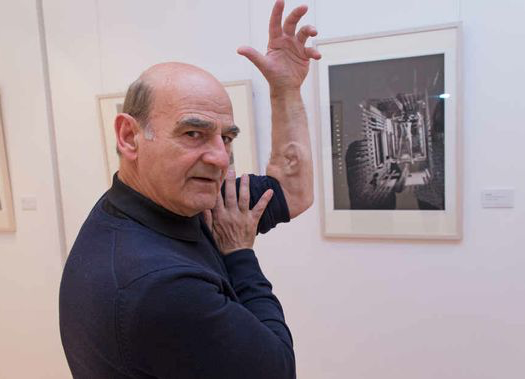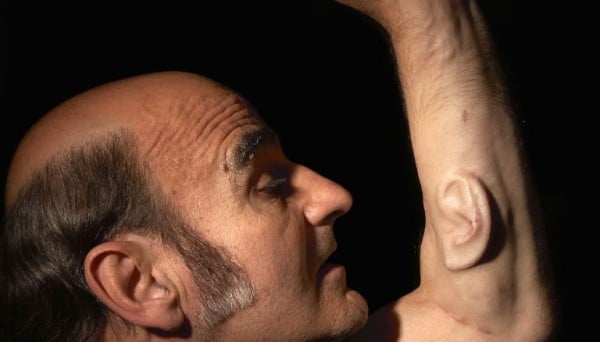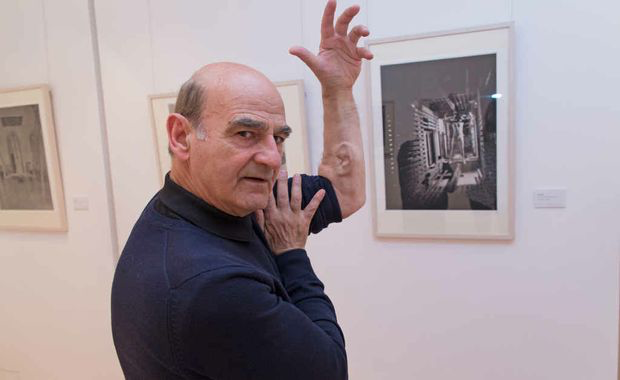Art World
Artist Grows Third Ear to Let the Internet Listen In on His Life
The idea is to keep the ear "online all the time."

The idea is to keep the ear "online all the time."

Sarah Cascone


Stelarc’s third ear.
Photo: Stelarc.
In the annals of strange things done in the name of art, Australian performance artist Stelarc is quickly making a name for himself.
Stelarc, a professor at Curtin University in Perth, was first inspired to grow a third ear in 1996, about a year after the technology to do so was first developed by Robert Langer of the Massachusetts Institute of Technology and Charles Vacanti of Harvard University. The pair incubated the world’s first artificial ear on the back of a mouse.
It took ten years for Stelarc to raise the necessary funds for an extra ear of his own, and to track down a team of plastic surgeons willing to perform the unorthodox procedure.
“You don’t really expect people to understand the art component of all of this,” Stelarc told ABC. “This ear is not for me, I’ve got two good ears to hear with. This ear is a remote listening device for people in other places.”

Stelarc’s third ear.
Photo: Stelarc.
At this point, the ear is a permanent fixture on Stelarc’s arm, having integrated the biocompatible frame surgeons inserted under the skin into its own tissue and blood supply within six months. Next, the artist hopes to raise the organ further off his arm by growing an ear lobe from his stem cells.
The final step would be to insert a wireless microphone that will let interested parties around the world tune into Stelarc’s days, eavesdropping at any and all times—privacy be damned.
“If I’m not in a wi-fi hotspot or I switch off my home modem, then perhaps I’ll be offline, but the idea actually is to try to keep the ear online all the time,” Stelarc explained.
He’s already tested out a microphone, but developed an infection that ended an otherwise successful trial.
Other artists have explored technologically-minded surgical modifications to their body, such as Wafaa Bilal, whose body rejected a camera implanted in the back of his head, and Neil Harbisson, a cyborg activist who drilled an antenna into his skull in 2004. Harbisson’s antenna allows him to receive phone calls and connect to the Internet, and translates colors, some beamed down via satellite signal, into sound.
Stelarc has explored cyborgization before, performing with a mechanical third hand, and placing cameras in his lungs, colon, and stomach.
“I am particularly interested in that idea of the post-human, that idea of the cyborg,” Stelarc told CNN. “What it means to be human will not be determined any longer merely by your biological structure but perhaps also determined largely by all of the technology that’s plugged or inserted into you.”
Related Stories:
German Museum Has a Living Copy of Van Gogh’s Famous Ear
Artist Launches Anti-Circumcision Kickstarter with Hyperrealistic Foreskin Sculptures